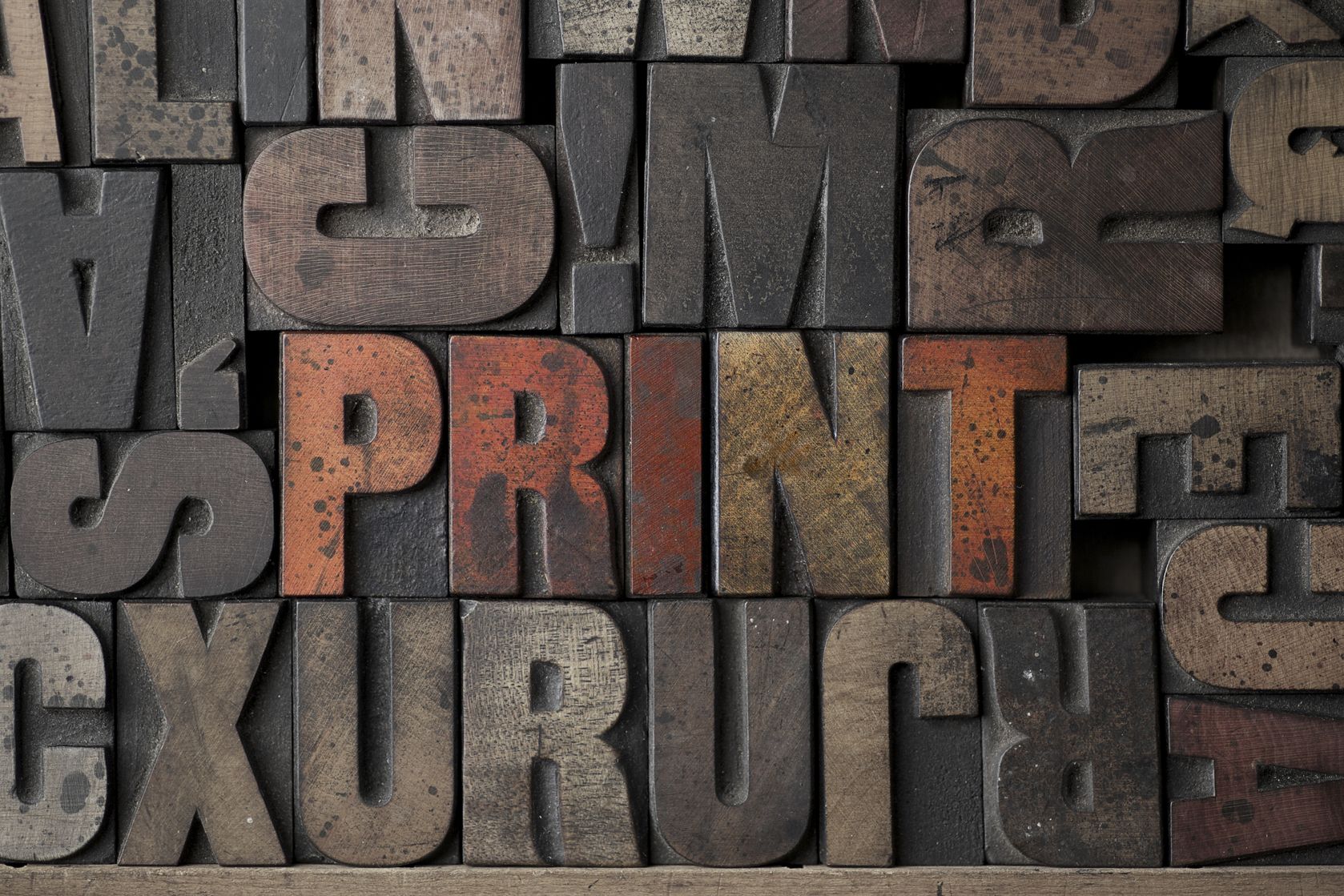 Unlike email, TV ads, and radio spots, postcards give people a representation of your message or brand that they can actually hold. Direct mail postcards are especially effective because they can keep paying off long after their initial delivery. By including a promotional offer or important information, your recipients will stick your direct mail postcard to the refrigerator or keep it in a frequently used drawer, providing a consistent reminder of your brand. When your recipients respond to your postcard by making a phone call, visiting a website, or contacting you through social media, you can see exactly how effective your campaign is.
Unlike email, TV ads, and radio spots, postcards give people a representation of your message or brand that they can actually hold. Direct mail postcards are especially effective because they can keep paying off long after their initial delivery. By including a promotional offer or important information, your recipients will stick your direct mail postcard to the refrigerator or keep it in a frequently used drawer, providing a consistent reminder of your brand. When your recipients respond to your postcard by making a phone call, visiting a website, or contacting you through social media, you can see exactly how effective your campaign is.
Creating the Right Message
No matter what type of marketing goals you have, creating a message that connects with your target audience will be essential for a direct mail campaign. Since a postcard contains relatively little space, finding words or images that grab the attention of the reader quickly is a must. Once the target is hooked, you’ll need to communicate clearly what you want the person to do. This is known as a call to action, and what it contains will depend on the mission of your direct mail postcard campaign. For example, if you want people to look at your full line of products on your website, you may want to include something like, “Visit our website today!” and add the URL.
Since you may not be able to use as many words as you’d like to communicate your message, using powerful words on your postcard will produce the biggest effect. Commonly used power words, like easy, new, quality, free, or guarantee, can make people feel like they are missing out on something special, causing them to respond to your call to action. These types of words should be used in every part of the postcard’s text. The economy of your words can mean the difference between a new lead and a postcard in the trash.
Picking the Right Size
There are a variety of sizes of postcards available that may seem trivial in difference but can have a big impact on the success of your marketing efforts. Your goal here is to send out a piece of mail that attracts the attention of your targets without being cumbersome. While most organizations will use one of the standard postcard sizes, such as 4 x 6 or 5 x 7, your printing company can help you create a customized size that fits your unique needs. While this option may cost a bit more per unit, the benefits may be worth it.
The ideal size of your direct mail postcard printing will depend on your overall budget and where your targets live. If you’re delivering to apartment complexes, senior living communities, or other locations with small mailboxes, you’ll want to keep the size of your postcards smaller so that they don’t bend or crinkle. If you’re delivering to businesses, however, you can get away with quite large postcards because mail is usually hand delivered to the front office. Large postcards can really make your brand stand out.
Basics of Direct Mail Postcard Printing Design
The right size postcard won’t mean a whole lot if the overall design of your mailer isn’t appealing. First, you’ll need to create an attention grabbing headline for the text. Much like newspaper and Internet articles, people are more likely to read it if they’re enticed by your heading. Your headline should have value to the reader and stand out from the other text by using bold fonts or attractive colors. This bold heading should be balanced with more subdued elements. Making every part of your postcard as bold and colorful as possible will be overbearing to the reader.
Each side of your postcard is equally important because it’s impossible to predict which side your targets will see first. For example, the front of your card can include a picture of a product with a few powerful bullet points and a call to action, while the back includes standard contact information and perhaps a few details about your company. One important aspect of design that you can’t overlook is adhering to standards set by the USPS. If your postcards can’t be delivered for any reason, you’ll be wasting time and money.
The Importance of Colors
Colors have powerful subconscious effects that we still don’t completely understand, but we know enough to take advantage of them in direct mail postcard design. When choosing a color scheme, you can go with a single color on white or multiple hues. The main quality you want in your color design is to make your postcard stand out among the other pieces of mail that your targets will be sorting through at the end of their busy day. Common color combinations include:
- Orange and blue. These two colors are bright and hard to ignore even on the smallest postcards. Few other pieces of mail will likely have a blue background with bright orange text, so you can be sure your piece will be noticed.
- Green and red. These Christmas colors evoke both warmth and desire, and they can be used for a wide range of businesses. When combined with white backgrounds, these colors can create a striking scheme.
- Yellow, black, and orange. Black is used in almost everything, but when combined with yellow or orange, it can signal important information that’s hard to ignore. That’s why hazard signs and other valuable safety warnings use this color scheme.
Color combinations can be very powerful, but so can single colors when combined with a simple white background. Bold, bright, colors with clear fonts can make your brand look professional and well organized, giving your targets confidence in the products, services, or causes you’re promoting.
The Mailing Process
Once your design, including colors, layout, and text, are set, it’s time to print and mail your postcards. This is a two-step process that you may decide to do yourself, but there are several advantages to hiring a full-service direct mail company. First, you may not have the proper equipment to produce your own postcards in the quantities you want. You can go to a retail copy shop, but they’ll charge a premium. A company like Caldwell uses state-of-the-art technology to produce high volume prints at a low cost.
After your postcards are printed, a full service company can apply postage, address, and send out your materials quickly. The current price of postage for standard postcards is 34 cents a piece, but you may be able to reduce the price per unit of your postcards by working with Caldwell. Because we do a lot of the sorting work that USPS does, we’re able to get bulk discount rates on postage. When you’re sending out thousands of postcards at a time, the savings can be quite significant.
 Avoiding Common Postcard Mistakes
Avoiding Common Postcard Mistakes
There are countless ways to conduct a postcard marketing campaign, making it easy to make mistakes that other companies have already made over and over again. While the learning process is very valuable, avoiding the common mistakes already made by other organizations can help you create the optimal strategy as soon as possible. Some of the mistakes in direct mail postcard printing that you should look to avoid include:
- Not targeting the right audience. Knowing who is most likely to be receptive to your products, services, or cause is absolutely crucial before going forward with a direct mail postcard campaign. If you don’t start with a good mailing list, the effort you put into design and messaging will be for nothing.
- Not repeating your call to action. It may seem annoying to you to repeat, “Call us now,” or “Visit our website today,” more than once, but your direct mail recipients aren’t as familiar with your message as you are. Reminding your targets what you want them to do can be the final thing that pushes them into action.
- Including inadequate contact information. Even if you have a very specific target demographic, you’re unlikely to cover an audience that only uses one type of communication. That’s why you need to include a phone number, email address, website, social media contacts and more on all your direct mail postcard printing. Missing one can mean missing an important sale or lead.
- Forgetting to include unique mailer identifiers. If you’re running multiple postcard campaigns at once, it will be impossible to measure the results if you don’t have a way of identifying which postcards your targets are responding to.
Avoiding common mistakes is important, but that’s not all you’ll need to do to optimize your direct mailing efforts. The more postcards you send out to the community, the more you’ll learn about what does and doesn’t work for your unique organization.
Conclusion
Postcards are one of the most cost-effective forms of direct mail marketing your organization can use. By following our guide and working with a quality direct mail company like Caldwell, you’ll have a great chance of reaching your marketing goals.








